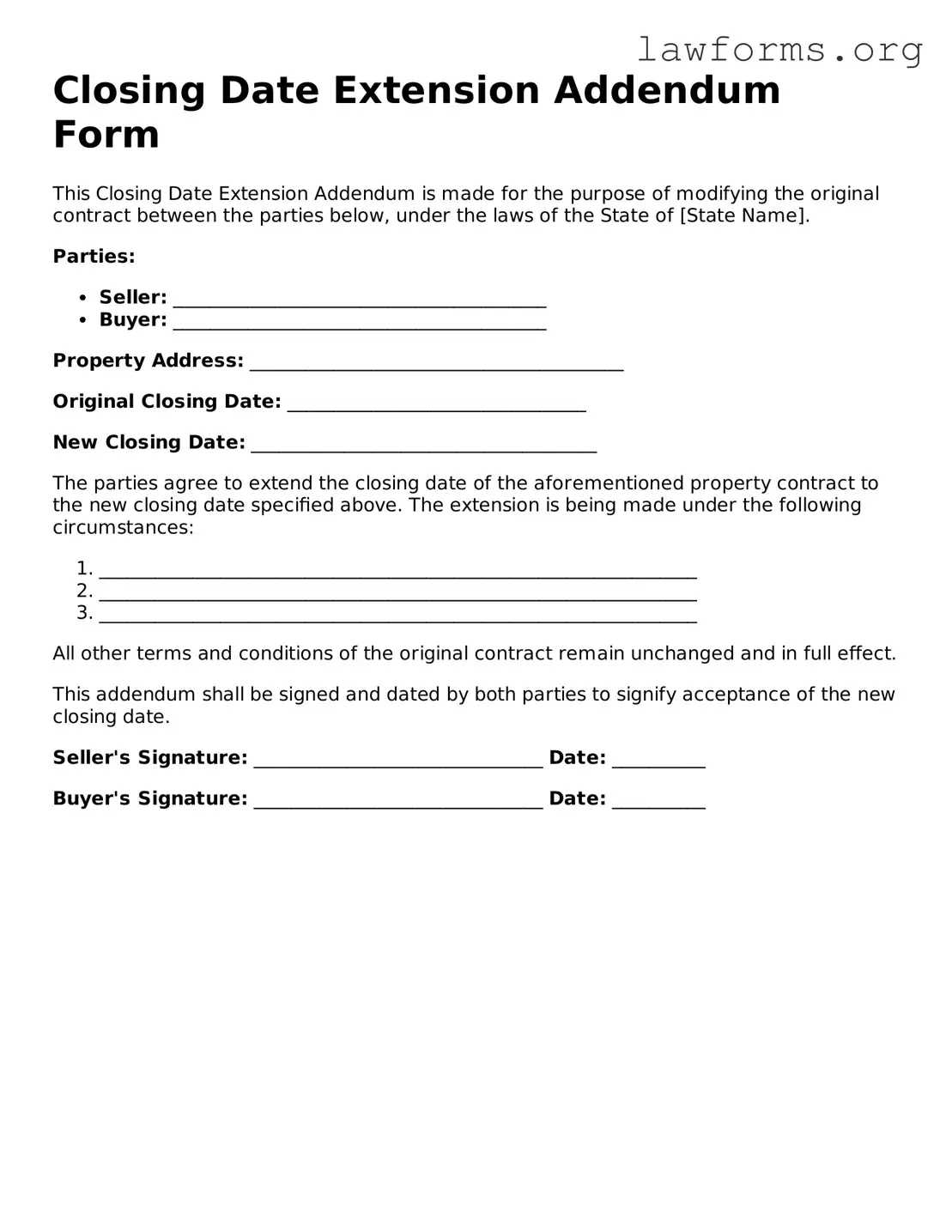Closing Date Extension Addendum Form
This Closing Date Extension Addendum is made for the purpose of modifying the original contract between the parties below, under the laws of the State of [State Name].
Parties:
- Seller: ________________________________________
- Buyer: ________________________________________
Property Address: ________________________________________
Original Closing Date: ________________________________
New Closing Date: _____________________________________
The parties agree to extend the closing date of the aforementioned property contract to the new closing date specified above. The extension is being made under the following circumstances:
- ________________________________________________________________
- ________________________________________________________________
- ________________________________________________________________
All other terms and conditions of the original contract remain unchanged and in full effect.
This addendum shall be signed and dated by both parties to signify acceptance of the new closing date.
Seller's Signature: _______________________________ Date: __________
Buyer's Signature: _______________________________ Date: __________
